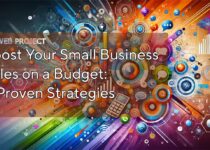7 Simple Things I Learned from Making $10k on a Gumroad Course
Recently, I crossed the $10,000 mark selling a course on Gumroad.
The number is now a bit higher now! 🙏
After selling and promoting it, here are 7 things I’ve learned.
1. It’s easier to pick a course software than you think.
There are so many course programs out there, it can be difficult to pick which one. Honestly, just choose which program is best suited for you. This time, I used Gumroad. Gumroad gave me flexibility with formats and it’s easy to track my users and create a newsletter, too. It’s also a software product that many people are familiar with, so I knew the adoption curve would be easier.
2. Don’t let the format bog you down (I used Notion).
Similar to the point above, don’t worry about the formats either. If you want to do all video, then do it. If you’d rather write everything, then great. Create a slide deck? Sure, go for it.
Find something flexible like Notion, Coda, or even Google Drive and start building out your course. You can change to more sophisticated software later on.
3. Gain an edge with templates
Remember how I said I used Notion to build out my course? I used a template I found from another creator and maker. The content is completely different, but much of the formatting and interlinking were the same. Templates give you an edge so you don’t start from scratch.
4. Re-use content to build the course
One of the benefits of writing often, either on Medium, Twitter, LinkedIn or somewhere else is that you know have a whole library of old content to choose from and mold into something. If you’re not writing towards something, then what are you doing?
You can use this same content to build the course or to at least give you critical ideas. It may not be as actionable as you need it to be for a course, but it’s a starting point.
5. Re-use content to promote the course
This isn’t a repeat of the point above. Much of the content you created can then be re-used in your social media posts. You probably improved from the first time around and now you can use that same content to give people a glimpse into your course or process.
Once you show people what you can do, you link out to your course as a promotion. I recently did that on LinkedIn for my course on organic search and content marketing:
I included a promotion to the playbook at the bottom of this LinkedIn post, which received a fair number of impressions (compared to what I usually get)
6. Create in sprints
If you’ve been gathering and creating content for awhile, you have a good foundation. But you’ll still need to make that into something and add form and function to it.
I suggest working in sprints (like working on it each day for an hour for a week) instead of just trying to work on it each day. Set a schedule with a to-do list and then start chipping away. If you use Notion or another template, it makes this process much easier. Because then you’re only focused on the content, not the container.
7. Build an MVP
I created my course as a minimum viable product. I sold it cheaply to a limited number of earlier adopters, made a few tweaks and then upped the price. They were taking a chance on me, so I didn’t mind selling for less. Gradually I raised the price as more and more people found value from it.
When I do another one, this is probably the strategy I will use again:
- Build an MVP
- Sell for a lower price to a limited audience
- Make tweaks
- Open it to more people
I’m actively thinking about what my next content playbook will be. I’m thinking about something with keyword research and developing topic clusters.
Follow me to get updates.
How do you create successful blog posts every time? Use this checklist to ensure you have the basics covered before hitting publish.
Never miss an article: https://joshspilker.medium.com/subscribe


